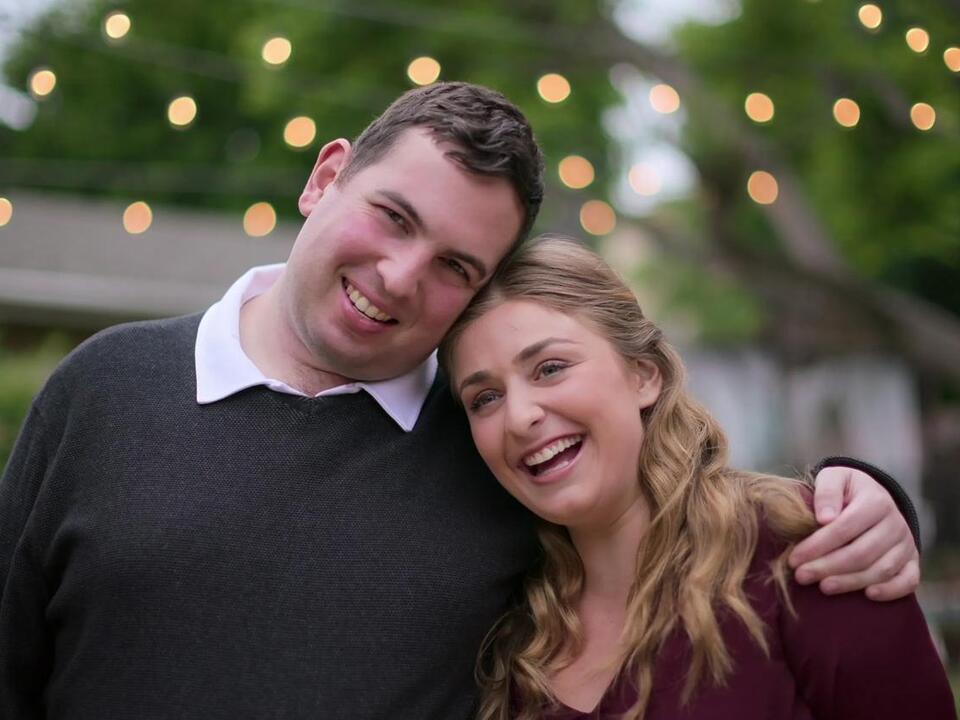Physical Address
304 North Cardinal St.
Dorchester Center, MA 02124
Physical Address
304 North Cardinal St.
Dorchester Center, MA 02124

When “Love on the Spectrum” creator Cian O’Clery asks Tanner, a 24-year-old with a bright and eager expression, how much he wants to find love on a scale of 1-10, Tanner enthusiastically responds with, “12!”
This enthusiasm for dating is a common theme on the show, which documents and aids individuals diagnosed with autism in finding a romantic partner. “Not everyone [on the spectrum] needs help finding love. But some people do, and some people are screaming out for it,” says O’Clery.
O’Clery had always aspired to create something in the dating genre that showcased real people and felt more honest and truthful than typical reality shows featuring Instagram models on exotic islands. “It felt like a great opportunity to introduce people to a large group of diverse individuals on the spectrum, which I think was missing in media, and also helping some people out who might want some help and support in that space,” he explains.
The Netflix series, initially shot for two seasons in Australia before moving to the U.S. for another two, is a reality show grounded in genuine experiences. Participants are provided help to find a match locally, but the story largely unfolds on its own. There are no manufactured storylines, “villain edits,” or producer interferences, aside from occasional encouragement or advice from O’Clery behind the camera.
To maintain authenticity, the production is as unobtrusive as possible, employing smaller cameras, no additional lighting, and the crew often “hiding in corners” during dates. “I try to be really quiet and keep a very small footprint. We have a really small crew… I shoot the second camera as well,” says O’Clery. “On dates, we’re generally sitting back, so people aren’t necessarily feeling that we’re there.”
With no producer-driven drama, the docuseries’ success hinges on a solid cast. Unlike other reality shows, there is no dedicated casting team. Instead, the producer handles casting, allowing for an ongoing process where the team is continuously seeking new stories. This method helped fan favorites like Michael join midway through the first season in Australia. It also ensures a continuity of care and support as the people who initially meet the participants often remain with them on set.
The team initially found cast members through connections within the autism community, developing relationships with various organizations to spread the word. “People write in, and then we, as a team, meet people,” O’Clery says. “Now, as the show has become more popular, we don’t need to put out a call. We get inundated with people wanting to join.”
The challenging part now is saying “no” to people because the show has limited spots, and many are reserved for returning participants. “You try to represent as much diversity within the spectrum as possible and ensure the stories feel different,” O’Clery notes. “[You want] people who are engaging and interesting — and want to find love.”
Previous seasons serve as reassurance to potential participants that their journey will be treated with care, but O’Clery acknowledges the significant trust they place in the production team. “It’s a huge amount of trust people are putting in us,” he says.
To honor this trust, the show has formalized its efforts to depict autism accurately and respectfully, hiring several neurodiverse crew members and a permanent autism consultant for sensitivity training sessions. The series also involves dating coach Jennifer Cook, who is on the spectrum herself and provides advice to participants.
“The people we’re filming are also consultants to us,” says O’Clery. “They know what’s right for them.”
The producers consider many factors when pairing participants, but many decisions are based on “gut” instinct. “It can be tricky. The spectrum is so diverse, and people are on different wavelengths. It’s really about finding people who might get along… and it’s great when it works.”
Often, it does work, as seen with couples like Abbey and David in the U.S. and Ronan and Katie in Australia, who are still together. Even when participants don’t find lasting romantic love, they often make new friends. For instance, James from the American series has expanded his social circle to include former romantic interests Maggie and Emma.
Many participants also gain newfound stardom after the show, such as Michael, who is set to appear in ABC’s “Austin.”
The impact of the show is multifaceted. O’Clery is proud that it documents a broad spectrum of individuals with autism, deviating from Hollywood’s trend of featuring only one autistic character in a series.
“We hear many stories from people saying that watching the show has motivated them to start their own [dating] journey,” he says. While hinting that the show might not return to Australia soon, O’Clery expresses openness to exploring other countries, especially those like France that could benefit from increased autism awareness. For now, the series is over “two-thirds” through filming its third American season.
The show’s second season in the U.S. is up for four Emmys this September. But regardless of its critical acclaim, for O’Clery, the most important critics are the participants. “We’re really happy that [the] people [we film] are happy.”
Source: Variety, Particle News



